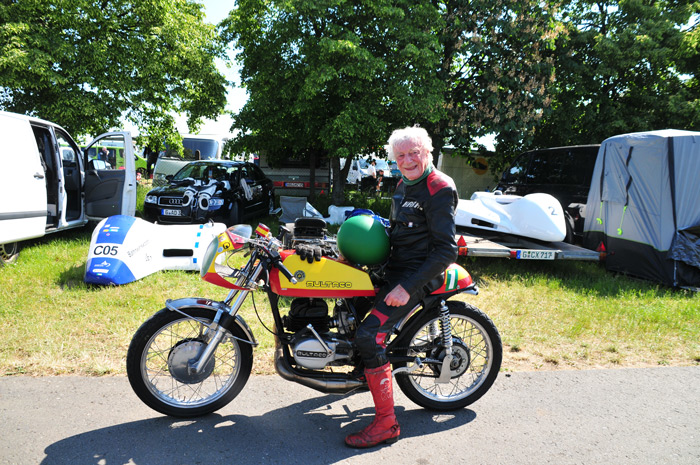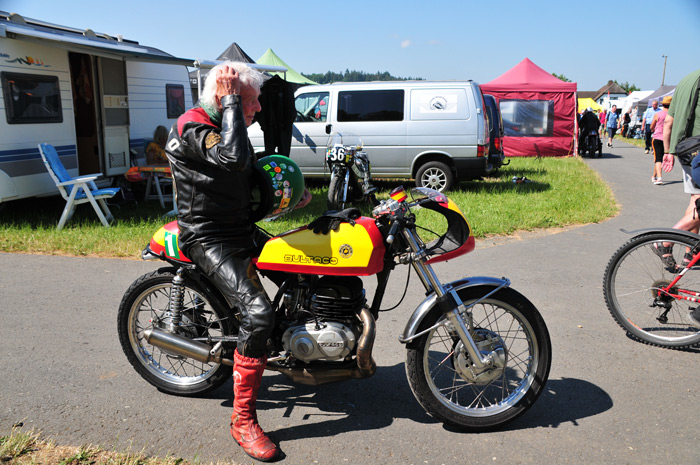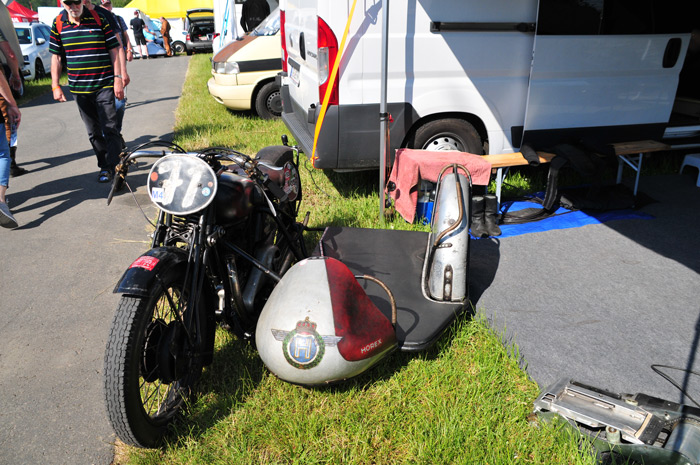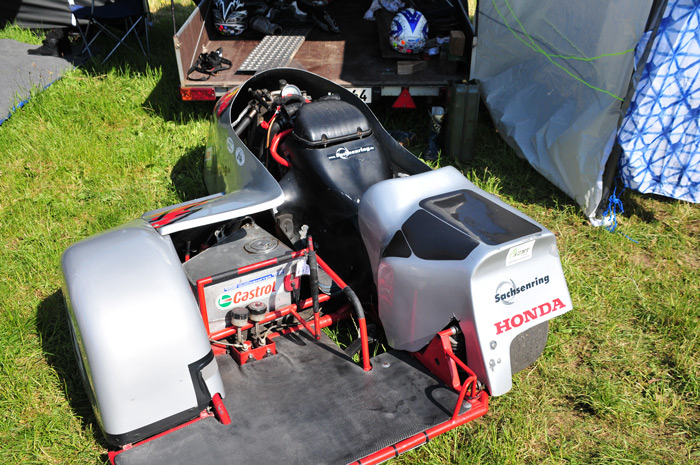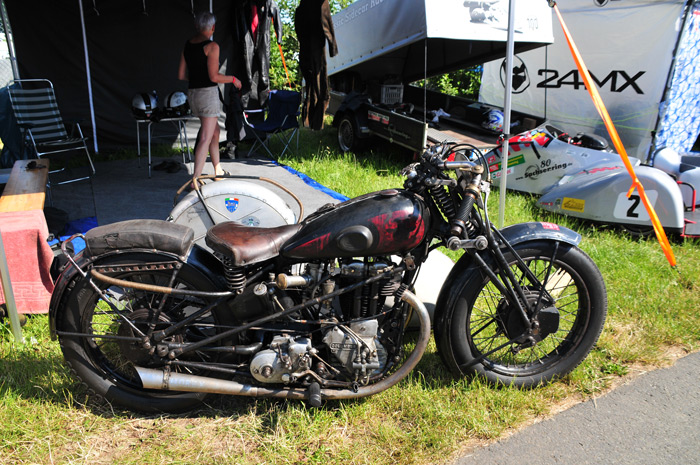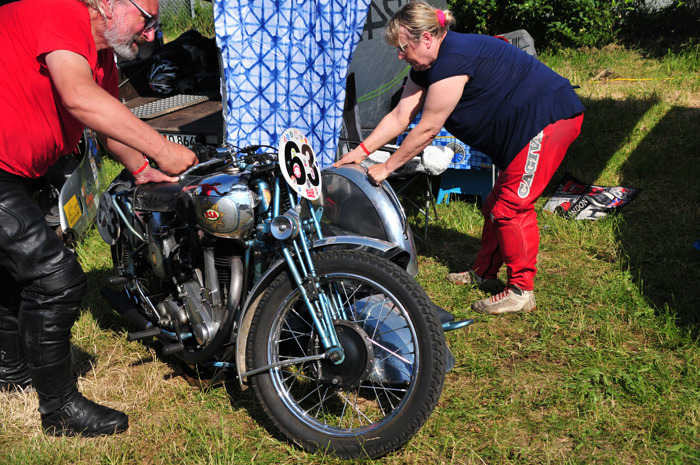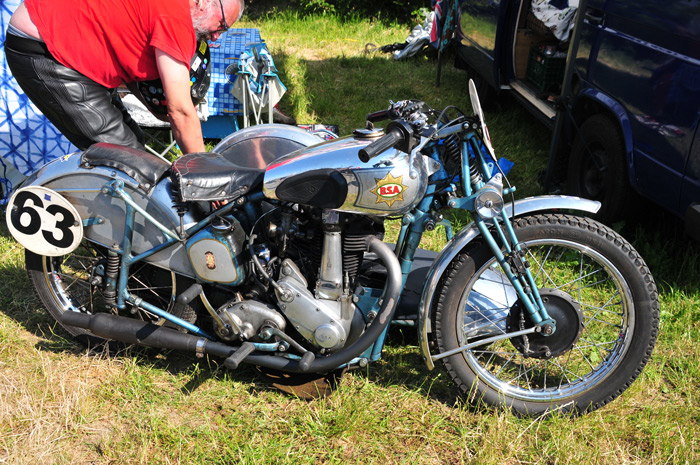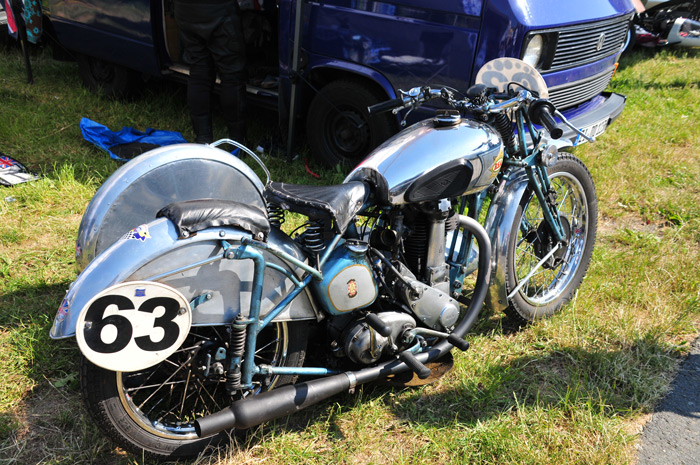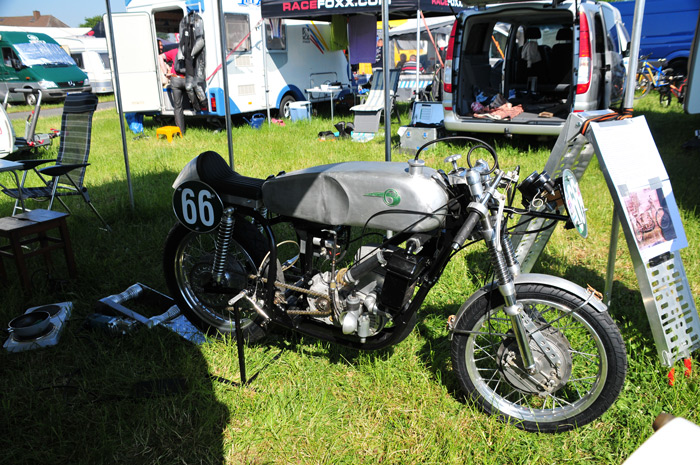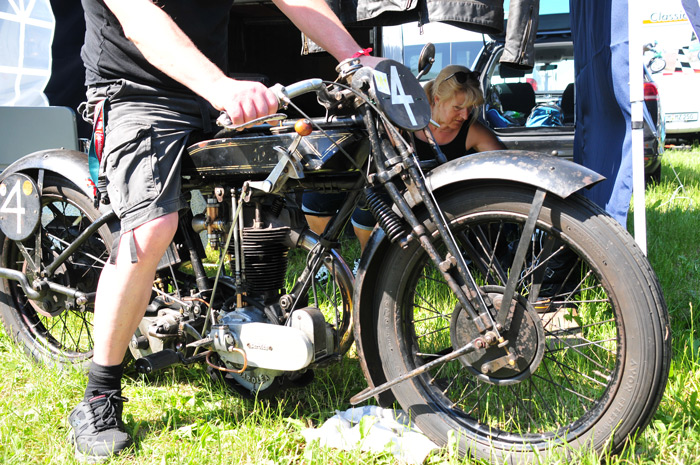Open paddock at Schleizer Dreieck
- Written by Portal Editor
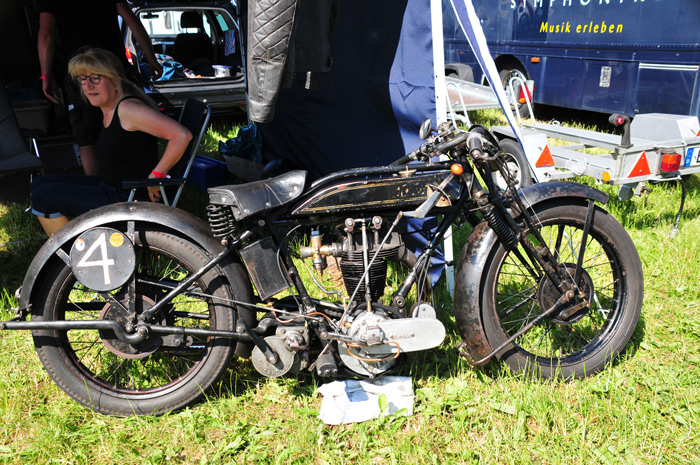
We were up early and our way should first lead to the paddock at Schleizer Dreieck, where there was already a lot of activity. Wonderful to look at this huge collection of historic and new motorcycles and to get into conversation with many a participant.
Right at the entrance we met the rider of a Bultaco racer, from 1958 to 1983 a quite successful Spanish motorcycle manufacturer from Sant Adrià de Besòs in Catalonia. The company was originally founded by Don Paco Bultó, grandfather of Spanish racing driver Sete Gibernau.
Its products were powered by single-cylinder, two-stroke engines and were mainly used in motorsports - particularly in trials and road racing. Over time, some of these models became valuable and sought-after collector's items. Many machines are still in use today in historic motorsport. The age of the driver is also interesting, a proud 83 years.
Immediately afterwards we came across a Horex team. In the founding year of 1923, the then 22-year-old Fritz Kleemann built the first "real" Horex, a 248 cc machine that also proved itself in racing. The cylinder made of light metal with a shrunk-in liner helped Kleemann to win its first races. The motto was: "Built by motorcyclists for motorcyclists".
A pioneering construction by Hermann Reeb, who joined Horex in 1927, was the parallel two-cylinder with overhead camshaft designed in 1932. This long-stroke engine had a crankshaft with three bearings and a camshaft with three bearings, which were connected by a chain to the right-hand side of the housing was driven.
The sporting successes include Karl Braun's German championship in the sidecar class, who enlarged the engine to 1 liter displacement (80 mm × 99 mm) and installed a fan for supercharging.
The Birmingham Small Arms Company, BSA for short, is a British motorcycle manufacturer and former automobile, bicycle and weapons manufacturer based in Birmingham, England. In the mid-1940s, BSA increasingly built compact two-cylinder engines.
The classic English twin with a 360° crank pin offset was produced as the BSA A7 with 500 cm³ from 1946 and as the A10 with 650 cm³ displacement from 1949, first with a rigid frame and later with swing arm chassis.
As was usual at the time, the gearboxes were housed separately in a separate housing. The so-called "pre-unit" models (with separate engine and transmission) were replaced in 1962 by the A50 (500 cc) and the A65 (650 cc).
The new models had so-called "unit" engines in block engine design with engine and transmission in one housing. The engine design changed significantly. While the A7 and A10 were classic British long-stroke twins, the new models were short-stroke. This did not go down well with customers.
Please also read:
